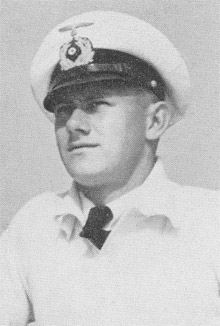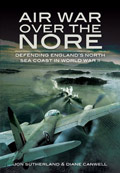The "Instructions for Entry into the Navy" remarked:
"The serious tasks of the Navy require that only recruits that are morally, spiritually and physically excellent and that, in addition to their other aptitudes, show both desire and love for military service in the Navy, should be enlisted."
The only recruits enlisted were those that were: "well developed for their age, well built and free of weaknesses (especially of contagious diseases) that affected their health, mobility and endurance".
Men needing to wear glasses were recruited only in exceptional circumstances. The teeth had, if necessary at one's own cost, to be in top condition. Particularly qualified were sailors, sea and shore fishermen, skilled workers from the metal industry and elsewhere. It was, however, a requirement that they had completed their training as a skilled worker. Recruit had to be citizens of the German Reich, without a criminal record and not married.
Potential recruits had to sign on for four years plus further professional training which was not to last for more than a year. On starting training as a petty officer, the requirement was increased to twelve years plus one year's professional training. Conscripts were brought into the Navy only to replace losses. The Navy's long sering volunteers could be appointed and employed, depending on his professional capabilities, in one of the following branches:
Boatswain, Company Sergeant-major, Signals
Operator, Helmsman, Carpenter,
Firework Maker, Gunner, Engineer, Musician, Machine Operator,
Radio Operator.
There were also career opportunities for telex operators, administrators and medical orderlies. During the war, further branches became available, such as being a news broadcaster. Within this branch, the volunteer could become a petty officer if he signed on for twelve years. At the end of 1938, as part of a general increase in positions, the rank of seargent-major (Feldwebel) - two adjacent stars - was increased by the addition of the rank of "Stabsfeldwebel" and "Stabsoberfeldwebel" - three stars. Petty officers showing particular potential could be promoted to officer rank.
The different branches all received the same pay. Radio, signal and telex operators along with engineers and musicians all had to meet certain physical and professional requirements.
The professional soldiers leaving the Navy after completing their contract were legally guaranteed a position in the civil service or in private industry. Those signing on for at least twelve years had the right to a position in the civil service, receiving the so-called "Civil Service Certificate".
Those selected to become officers of the navy
were
"intellectually excellent young men with the necessery
capabilities and knowledge".
A high standard of academic achievement was required. The officer
cadets gained their
knowledge of naval service during their training as an officer.
Officer branches
The badges are placed at the shoulder straps and the sleeves:
 |

|

|

|
| Seeoffiziere Naval officers |
Ingenieuroffiziere (Ing.) Engineer officers |
Sperrwaffenoffiziere (W) Minebarrier officers |
Waffenoffiziere (W) Weapons officers |
 |

|

|

|
| Verwaltungsoffiziere (V) Administration officers |
Sanitatsoffiziere Medical officers |
Offiziere der Marineartillerie (MA) Coastal artillery officers |
Offiziere des techn. Nachrichtenwesens (TN) Technical communication officers |
 |
|||
| Torpedotechnische
Offiziere (T) Torpedotechnical officers |
|||
Branches of petty officers and men
These badges are placed at the shoulder straps (Seargent ranks), or at the left sleeve (mates and men).

Seemännische Laufbahn Naval |

Maschinenlaufbahn Machine operator |

Steuermannslaufbahn Navigation |

Signallaufbahn Signals operator |

Funklaufbahn Radio operator |

Fernschreiblaufbahn Telex operator |

Zimmermannslaufbahn Carpenter |

Feuerwerkerlaufbahn Ammunition expert |

Artilleriemechaniker Gun mechanics |

Torpedomechaniker Torpedo mechanics |

Sperrwaffenmechaniker Mine mechanics |

Verwaltungslaufbahn Administrators |

Sanitätslaufbahn Medicals |

Schreiberlaufbahn Writers |

Kraftfahrlaufbahn Drivers |

Marineartillerielaufbahn Coastal gunner |

Flugmeldelaufbahn Air observer |

Musiklaufbahn Musicians |




